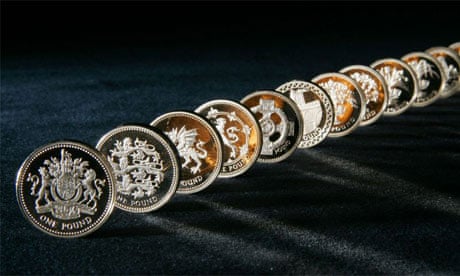One in every 50 £1 coins in circulation in the UK could be fake, it was reported today.
The results of a sampling test by the Royal Mint, obtained by the BBC, show up to 2% of £1 coins could be counterfeit - a total of 30m coins.
The number appears to have doubled since the last time sampling test results were released in 2003, when the number of forged pounds coins was estimated to be 1%.
Robert Matthews, formerly the Queen's assay master until he retired to become a coin consultant four years ago, said confidence in coins collapsed in other countries when forgery rates reached similar levels.
He told the BBC: "In 2004, people started refusing to take the South African 5 Rand coin due to concerns about the number of counterfeits, and eventually the coin had to be redesigned and recirculated.
"Independent surveys showed the number of counterfeits to be 2% - the same as we've got here - and I'm worried that if we're not careful the same thing will happen to the pound coin."
In a statement the Royal Mint said: "We track the counterfeit rate through regular surveys in the spring and autumn every year. The survey consists of taking a random sample of coins from across the country and subjecting them to individual analytical inspection.
"It is a criminal offence to make or use counterfeited coins. Any member of the public who suspects they have a counterfeited coin should not attempt to spend it."
A spokesman for the Mint added that anyone who found they had a fake coin in their wallet should hand it to the police.
There are now almost 1.5bn £1 coins in circulation in the UK. The coin, which is made of copper, nickel and zinc, was introduced in 1983 to provide a longer-lasting replacement for the £1 note.
While notes last an average of only nine months, a coin has a life expectancy of around 40 years.
How to spot a fake:
Check that the date and design match - the Royal Mint website has a list showing the year that each design was introduced. Many forgers get this wrong.
Check that the edge inscription and date match - again you can find the list of inscriptions and their corresponding year on the Royal Mint site. Also check it is crisp and in the right lettering - forgeries often have writing that is uneven in depth and spacing.
Check the Queen's head is the right depth - on some forgeries it protrudes too much, on others it is not deep enough.
Check that the Queen's head lines up with the design on the reverse. Hold the coin between two fingers with the design straight and spin it round - if the Queen's head is off centre it is probably a fake.
